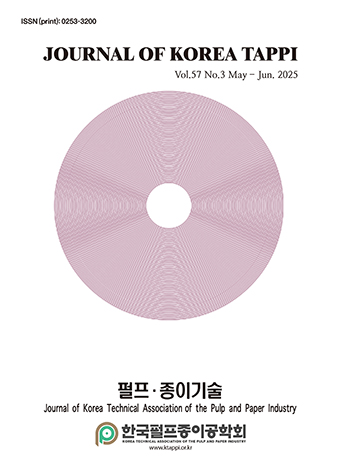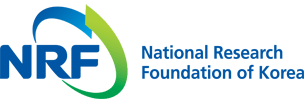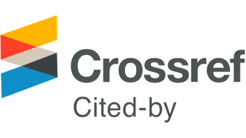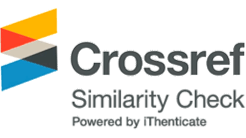Instructions for Authors
INSTRUCTIONS FOR AUTHORS
JOURNAL OF KOREA TAPPI
(Enacted in 20 April 2000, most recently revised in 24 December 2019)
Original manuscripts containing new significant results in the fields of science and technology for pulp, paper and biomass utilization, and not scheduled for publication elsewhere will be considered for publication. Reviews and manuscripts based on preprints from conferences may also be accepted. All manuscripts will be refereed by two or more members of the KTAPPI Editorial Board who makes a critical appraisal of the content and structure of the paper and recommends whether it should be published taking into consideration what is already published in the literature on the subject concerned.
Manuscript Submission
Manuscripts should be submitted via submission.ktappi.kr
Author check list and Copyright transfer can be accessed during the submission process on the homepage.
Forms of Publication
Original Papers: Manuscript represents original research articles.
Brief Communications: Short reports of original research.
Technical/Case Reports: Descriptions or information of new technologies and current situations in industries and related fields.
Reviews: Invited or submitted review papers on a specific topic.
Letters to the Editor: Critical comments are welcomed for correcting errors of published facts and for providing alternative interpretations of published data.
Peer-Review
It is published bimonthly on February 28th, April 30th, June 30th, August 30th, October 30th and December 30th. Manuscript can be received at any time. The manuscript that does not keep the instructions to authors may be rejected before review. Certificate of receipt of manuscript is issued to the corresponding author via email.
Peer Review Process
Each paper submitted for peer review will be refereed by at least two reviewers of the Korea TAPPI Editorial Board. The author’s name and affiliation are not disclosed during review process to reviewers. Reviewers will make a critical appraisal of the substance and structure of the paper and recommend whether it should be published taking into consideration the novelty of the content and its significance to the readership of the journal. After review the Peer Review Editor will advise the author of the reviewer’s comments and whether the paper is rejected, accepted, or is still being considered awaiting the authors’ response to reviewer’s reservations. The author may be given an opportunity to revise the paper in accordance with the reviewer’s comments. If the paper is finally accepted, it will be edited for printing and then published, generally in order of final acceptance date.
Publication Charge
No additional publication fee will be charged for manuscripts written in English and review papers.
Manuscript Preparation
The manuscript should preferably be submitted by e-mail or by other electronic copy. Figures and equations should be supplied on separate pages. KTAPPI is published in black and white, but only if requested by related authors, the relevant papers may be published in color with the payment of actual expenses.
Role of the Editorial Board
The decision on the editing of the journal is made by the Editorial Board. The manuscript may be revised for the consistency of the editorial work as far as the content is not affected. Every manuscript submitted will not be returned.
English Language
The manuscripts must be written in MS words in good English, linguistically revised. The font style should be Times New Roman. Either American or British spelling may be used, but consistency is desired. Report your own work in the past tense, and others’ work in the present tense.
Title, Authors and Headings
The title must be short but shall contain essential information. It should not contain abbreviations. Authors’ names and affiliations follow follows the title.
Headings, sub headings and sub sub headings should be written as follows;
1. Introduction
2. Materials and Methods
2.1
2.1.1
…
Abstract
The summary at the beginning of the paper should be informative, not merely indicative. It should contain the purpose of the work, the outline of experiments or investigation, the significant results and the brief conclusions. It should be more than 150 words. Abbreviations and acronyms should be avoided.
Keywords
Keywords should be given to help abstracting services in classifying the paper.
Address(es) of the Author(s)
Addresses (including corresponding author’s e-mail) and positions (occupations such as professor, student, researcher, manager, etc.) at the time of the publication are given for each author in a footnote. For example:
*1Department of Forest Products, Gyeongsang National University, Gazwa-dong, Jinju, 52828, Republic of Korea, Professor.
*2Ahlstrom Machinery Inc., 101 Ridge Street, Glen Falls, New York, USA, Senior Researcher.
Introduction
Scope of the problem investigated, review of pertinent literature, method of investigation, and statement of the aim of the work.
Materials and Methods
Give full details of all the experiments, so that they can be repeated. Results should not be reported here.
Results and Discussion
Representative data shall be presented. Methods shall not be described here. Discuss principles and relationships, and point out exceptions. Show agreement with published research work. The significance of the work or conclusions should be presented at the end of the discussion or in a separate section.
Mathematics
The SI system (metric system) shall be used throughout. Each equation should be set on a separate line and numbered with square brackets ‘Eq. [X]’. Use Arabic numerals. All mathematical symbols must be explained.
Tables
Wherever tables are mentioned, write ‘Table X’. A short heading should be provided for each table. Tables should be consecutively numbered with Arabic numerals like ‘Table X’. Units should preferably be given in column headings. Use capital letters sparingly.
Illustrations
Wherever figures are mentioned, write ‘Fig(s). X’. Figures should be consecutively numbered with Arabic numerals with a short heading. The lines of the figures, on separate sheets, must be sufficiently heavy to be readily legible and the letters and symbols sufficiently large. The minimum resolution of pictures must be 300 dpi (10 cm width). Units should be given on the axes. Photographs must have good contrast when printed. Magnification of photomicrographs must be indicated e.g. with a scale line.
Conclusions
The conclusions of the work should be clearly stated in a separate section.
Acknowledgements and Appendix
Special thanks and information can be given as an Acknowledgement and Appendix.
Literature Cited
References should not include unpublished works. They should be indicated in the text by numbers in parentheses and the order of the numbers must be the order in which they appear in the text. The list must be in numerical order. The style to be used is exemplified by the following:
For Journals:
1. Choi, G. S., Noh, J. H., and Sung Y. J., Preparation of sheet-like composite by using fallen leaves, Journal of Korea TAPPI 52(5):127-134 (2020).
2. Covey, G. H. and Nguyen, K. L., Chloride management in a closed ECF bleach plant, Appita J. 49(5):332-338 (1996).
For Books:
1. Padanyi, Z. V., Physical aging and glass transition: Effects on the mechanical properties of paper and board, In Products of Papermaking, Baker, C. F. (ed.), Pira, UK, pp. 521-530 (1993).
2. Fowkes, F. W., Surface and Interfacial Aspects of Biomedical Polymers, Anderade, J. D. (ed.), Vol. 1, Plenum Press, New York, p. 337 (1985).
For Conferences and Conference Preprints:
1. Lloyd, J., Allison, R., and Horne, C., Laboratory kraft pulping with low dissolved solids concentrations, Proc. 51st Appita Ann. Gen. Conf., Melbourne, p. 565 (1997).
2. Sanders, N. D. and Schaejier, J. H., Zeta potential distributions in pulp/PCC mixtures, 1989 Papermakers Conference Proceedings, TAPPI Press, Atlanta, pp. 69-74.
For Patents:
1. Wallis, A. F. A. and Wearne, R. H., Chemical cellulose, Aust. Pat. Appl. PJ 3803/98 (1989).


 Journal of Korea TAPPI
Journal of Korea TAPPI







